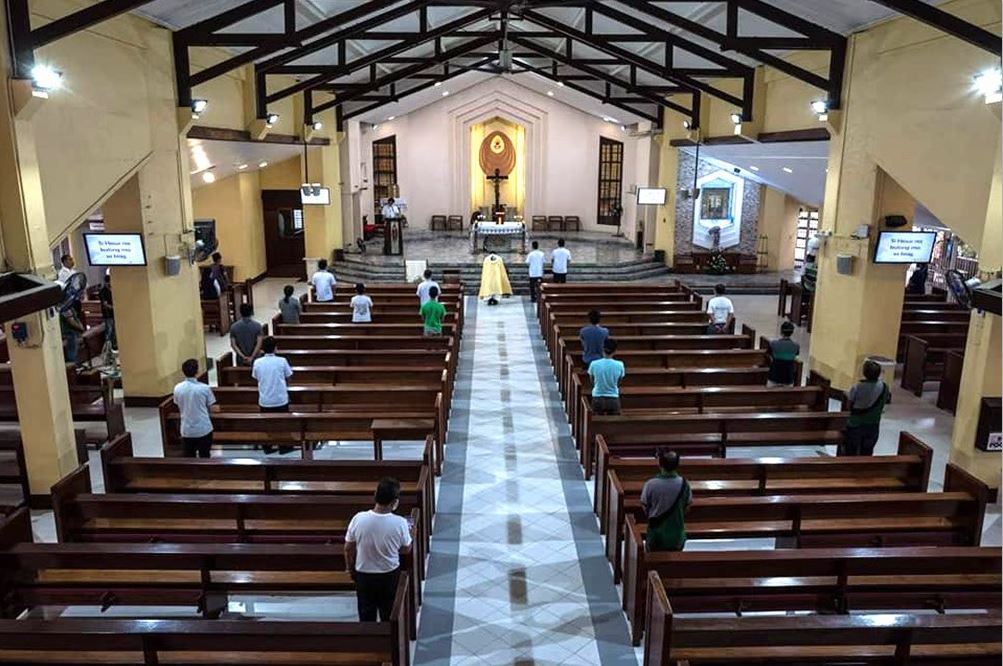
Philippine churches in selected areas have been allowed to conduct mass gatherings under strict community quarantine guidelines.
In over two months since community quarantine to stop the spread of coronavirus disease was enforced, churches across the archipelago adjusted the liturgical celebrations from mass congregation to the home-based family church with Cardinal Chito Tagle in Rome acknowledging the value of using technology to help people keep the faith in these difficult times.
Priests were celebrating the Holy Mass in front of a camera while parishioners participated via live stream, people sent Holy Week prayer requests or mass intentions online and even observed Seven Churches Visitation via Google Maps Street View.
As the country continues to undergo different levels of quarantine from ECQ to MECQ and GCQ, the government has restricted gatherings to a few people, whereas church gatherings normally number in the hundreds.
The Inter-Agency Task Force for the Management of Emerging Infectious Diseases (IATF-EID) on Friday, May 15, 2020, issued Resolution 37 placing Cebu and Mandaue cities under ECQ, the strictest community quarantine level, from May 16 to 31.
MECQ was imposed in Metro Manila, Angeles City, Bataan, Bulacan, Laguna, Nueva, Ecija, Pampanga, and Zambales until May 31.
All other areas in the country have been deemed under GCQ.
The IATF-EID also announced it had allowed religious gatherings under the following strict health guidelines:
- A church gathering in areas under modified enhanced community quarantine (MECQ) is limited to not more than five persons.
- Areas under general community quarantine (GCQ) are allowed the maximum number of 10 participants.
- Areas under enhanced community quarantine (ECQ) still prohibit any mass gathering.
An earlier proposal from the Catholic Bishops Conference of the Philippines stated that churches would limit the number of people present, ensure physical distancing, enforce sanitation, and require the congregation to wear face masks.
According to Bishop Broderick Pabillo of the Manila Archdiocese, parishes are more than willing to coordinate with local government units to make sure that the safety measures are strictly being followed in liturgical celebrations.
“They can even send barangay personnel to check if we can observe the protocols. We have no problem with it,” the Philippine church leader said.
“Allowing people to go back to Church to thank the Lord, to ask for his protection and implore his help, are deemed very important by the people,” he added.
With reports from Blesilda Dela Cruz
TELL US in the comments below how important is it to you to physically attend a church celebration?
Want to know how to be a Proud Pinoy? Like, Follow, Subscribe to GoodNewsPilipinas.com, and our socials Facebook, Twitter, Instagram, Good News Pilipinas! TV on YouTube, for new story notifications, and e-mail newsletters for updates on more Filipino Pride stories.










